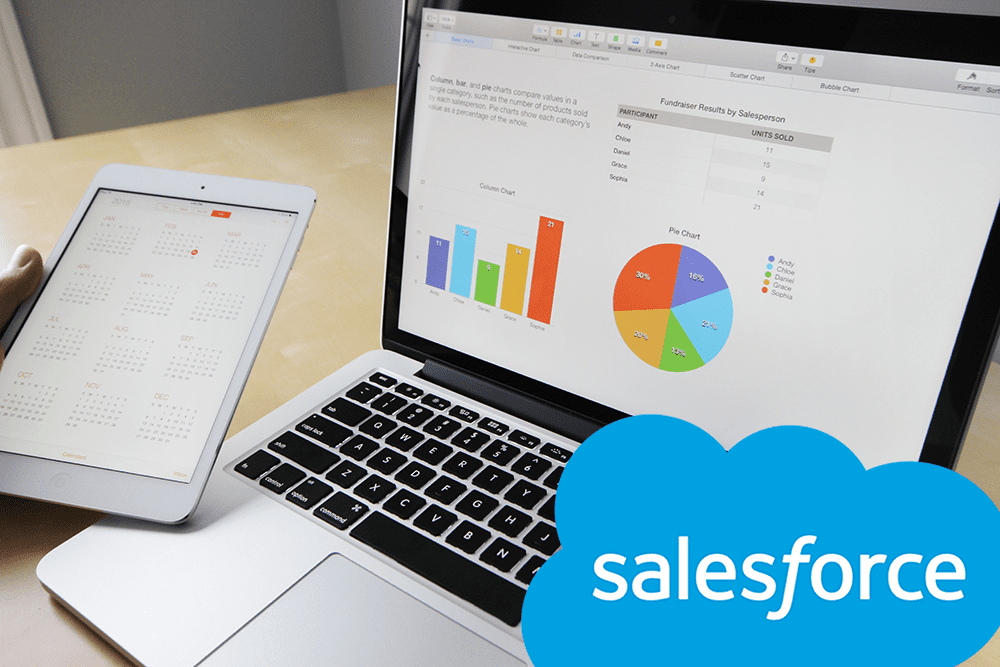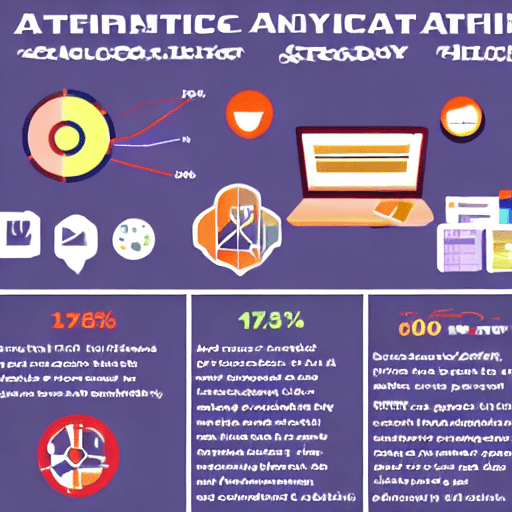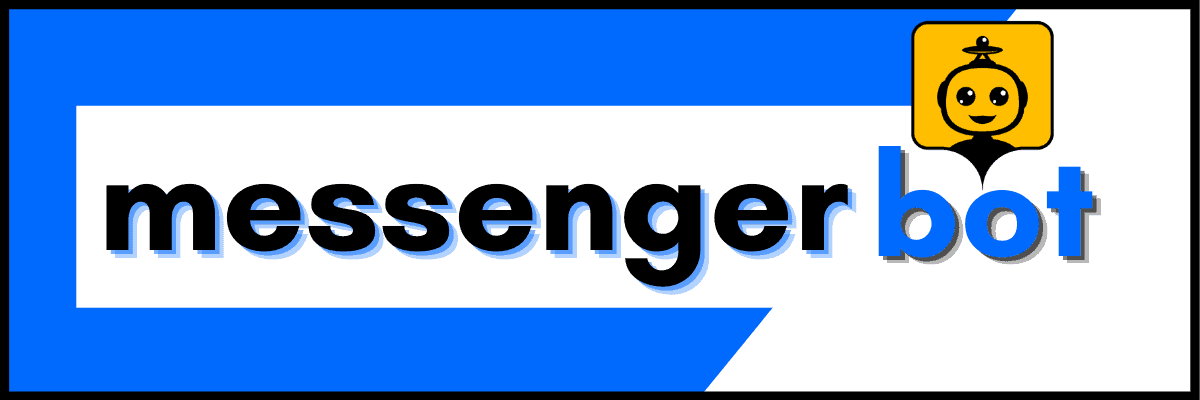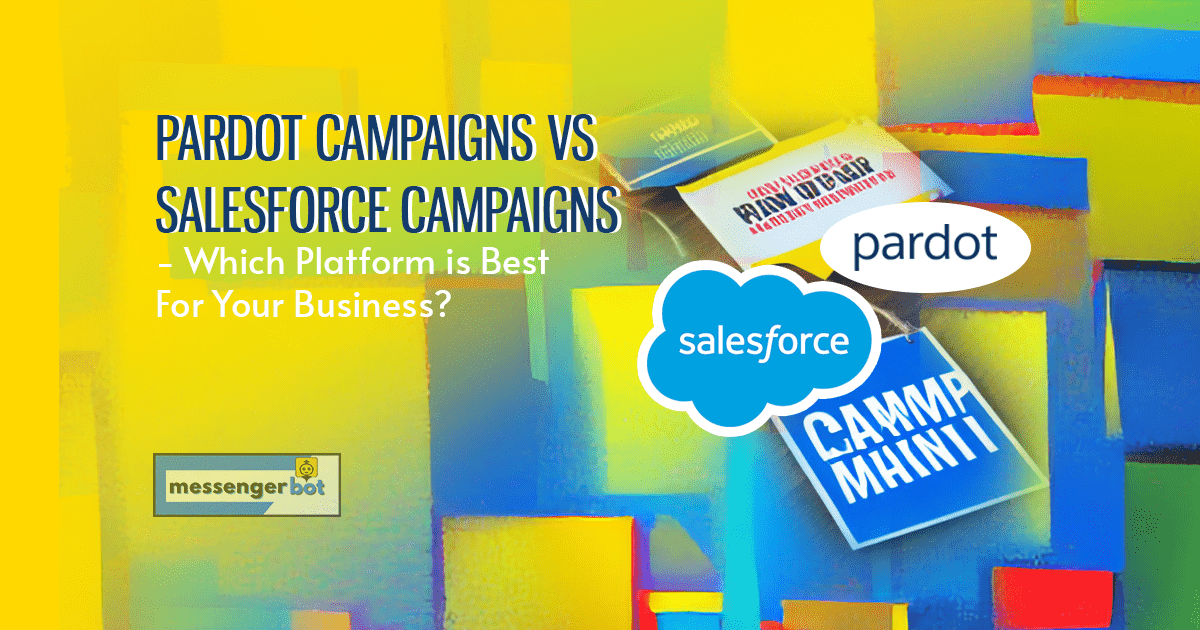您今年是否考虑为您的业务开展一项活动?我们最近与许多不同的企业进行了交谈,并注意到许多企业正在在两个不同的平台之间做出选择:Pardot活动和Salesforce活动。哪一个适合您的业务?
在这篇博客文章中,我们将讨论这两个平台之间的区别,以便您可以决定哪个最适合您的需求。
Pardot活动

Pardot活动是一个允许企业与其访客、客户和潜在客户实时连接的平台。更具体地说,Pardot通过允许用户根据各种事件(例如填写表单或下载文档)为特定人群创建自动化营销活动来提供帮助。这些活动可以通过访客在您网站上的行为触发,也可以在任何时间安排。
Pardot活动还使用户能够实时跟踪他们的网站访客、客户和潜在客户。这包括查看单个联系人的个人资料和活动历史,以及能够看到特定Pardot活动的表现。
总体而言,Pardot活动对于希望实时与潜在客户或潜在客户建立联系的企业非常有帮助。通过与每位访客或潜在客户单独沟通,Pardot使企业在营销其品牌时更加高效和有效。
Salesforce活动

Salesforce是全球超过150,000家公司使用的行业领先CRM软件。Salesforce为企业提供了一系列功能,但其主要功能是通过销售管道跟踪联系人和潜在客户,以便用户能够更快地达成交易。
Salesforce活动是在平台内的自动化营销工作流程,可以在销售周期的每个阶段与潜在客户保持互动。
通过Salesforce Marketing Cloud,您可以轻松创建高度针对性的活动,这些活动根据受众的人口统计、兴趣和行为量身定制。
Salesforce活动如何与Pardot集成?
Salesforce活动可以通过使用Salesforce AppExchange查找和安装“Pardot for Salesforce”应用程序与Pardot集成。这将允许您在两个平台上创建、管理和跟踪潜在客户。此外,您可以使用“Pardot for Salesforce”应用程序将潜在客户数据自动导出到Pardot,反之亦然。
Pardot活动也可以通过使用Pardot API与Salesforce活动集成,以在两个平台之间创建自定义集成。此选项为您提供了更多灵活性,以便您希望数据在两个系统之间流动的方式。例如,您可以使用Pardot API在每当潜在客户被添加到Pardot活动时自动在Salesforce中创建新潜在客户。
Pardot活动与Salesforce活动功能比较

Salesforce和Pardot是市场上最受欢迎的两个CRM(客户关系管理)平台。两者都提供广泛的功能,但哪个最适合您的业务?在本文中,我们将根据它们的功能比较这两个平台,以帮助您决定哪个适合您。
社交媒体

社交媒体是营销组合的一部分,重要性在于它使公司能够接触更广泛的受众。它已成为与客户沟通的有效方式,但应适度使用,因为过多的社交媒体可能对您的业务产生负面影响。
企业可以利用社交媒体提高品牌知名度、提供客户服务和进行调研。
社交媒体是提高品牌知名度的好方法。您可以分享照片和视频,发布有关公司的更新,并撰写突出您所做工作的博客文章。
客户通常会转向社交媒体寻求客户服务帮助。企业可以利用社交媒体回应客户的问题和关切。
社交媒体也是企业的重要研究工具,可以提供有关客户人口统计和偏好的见解。您可以在Facebook页面上创建调查或发送推文询问客户对您品牌的体验。
Pardot活动的社交媒体包括Facebook、Twitter、LinkedIn和YouTube。您可以在这些平台上的任何一个上创建活动并与客户分享。
Pardot活动还与社交媒体监控工具集成,使您能够查看客户通过其帖子对您品牌的响应。
Pardot活动中的Facebook用于创建活动并与客户分享。您可以添加封面照片,撰写有关您活动的帖子,并添加指向您网站或着陆页的链接。
Pardot活动中的Twitter用于推送有关您活动的更新,分享照片和视频,并询问有关活动的问题。
Pardot活动中的LinkedIn用于创建活动并与客户分享。
Pardot活动中的YouTube用于添加展示您所做工作的内容的视频,并可以通过其他社交媒体渠道分享。
Salesforce活动的社交媒体需要使用Salesforce Marketing Cloud。您可以创建活动,建立列表并在Facebook、LinkedIn或Twitter上定位您的受众。
Salesforce活动中的Facebook用于创建活动,您可以通过广告或帖子与客户进行跟进。
Salesforce活动中的LinkedIn允许您设置自定义字段,以根据行业、职位或其他因素识别潜在客户。
Twitter in Salesforce campaigns lets you target customers who have visited your website, engaged with your content, or followed one of your Twitter profiles.
In terms of social media, Pardot campaigns and Salesforce campaigns are quite different. Pardot campaigns’ social media includes Facebook, Twitter, LinkedIn and YouTube whereas Salesforce campaign’s social media focuses on Facebook and Twitter.
The main difference between Pardot and Salesforce is the integration with other marketing channels like email or webinars. Depending on your business, you should consider what channel is best for your brand.
电子邮件营销
Email marketing is an essential tool for businesses of all sizes because it’s cost-effective, measurable, and easy to integrate with other marketing channels.
Email marketing is defined as the process of sending a commercial message, typically to a group of people, using email. It’s one of the most efficient and effective ways to reach your target audience because it allows you to connect with them directly in their inboxes.
Pardot Campaigns’ email marketing is one of the most effective ways to deliver personalized content, at scale. Whether you’re promoting a product launch or building brand awareness with an email newsletter, Pardot Campaigns provides marketers with all the tools they need to quickly create and send targeted marketing emails that drive results.
Pardot Campaigns combines email marketing with the powerful lead management capabilities of Pardot to help you create segmented lists, send targeted messages and measure campaign success based on inbound activity.
Salesforce Campaigns’ email marketing is different from Pardot campaigns in a few ways. First, Salesforce allows you to send automated emails based on customer activity (e.g., when someone downloads a white paper or registers for an event), which Pardot does not currently offer. Additionally, Salesforce provides templates and layouts that are more customizable than those available in Pardot campaigns.
Salesforce campaigns also differ in terms of metrics. While Pardot tracks email opens, Salesforce does not give you this information because it’s part of the larger CRM platform–you can see campaign responses and how they relate to other touchpoints throughout the customer journey (e.g., web visits) through custom reporting, but there are no open tracking capabilities.
In terms of email marketing, both Pardot campaigns and Salesforce offer valuable tools that marketers can use to send relevant emails to their audiences. However, they are not the same in terms of how they track metrics or deliver email templates with specific layouts.
潜在客户管理
Lead management is the process of tracking and managing leads as they move through the sales funnel. This is important for two reasons:
First, it allows you to track the effectiveness of your marketing campaigns. By understanding which campaigns are turning into leads and then into customers, you can fine-tune your efforts and improve your ROI.
Second, it allows you to track the effectiveness of your sales efforts. By understanding which leads and customers came from marketing and which came through other channels (such as referrals or cold calls), you can better match your capabilities with demand.
Pardot Campaigns lead management is simple and easy to use. For each campaign, you can track the lead source (e.g., email or paid search), whether it is new or existing, contact details such as name and email address, when they were added to your list, how many times they’ve been contacted with this campaign (i.e., follow up count), and much more.
Pardot makes it easy to segment leads by these criteria, allowing you to see which campaigns are generating the most leads and the quality of those leads. You can also track how effective your follow-up efforts have been using this information.
Salesforce Campaigns lead management is more manual and requires a bit of upkeep from your marketing team.
Salesforce allows you to track the lead source, list owner, contact information (i.e., name or email), last activity date, how they were added to your list (via import or manually), and many other fields. It’s not nearly as extensive as Pardot’s campaign management, but it does give you enough information to track the effectiveness of your marketing efforts.
While both platforms offer similar benefits when it comes to tracking leads through the sales funnel, Salesforce offers one advantage: its ability to better link actions and outcomes. For example, if a marketing campaign generated 100 leads and the team only followed up with 20 of them, Salesforce will let you know that 80 people were lost in the process (known as “leakage”). This information is vital when it
In terms of lead management, Pardot and Salesforce are both powerful tools. However, when it comes to overall effectiveness, Salesforce is the clear winner. Its ability to track lead leakage and link actions and outcomes makes it an invaluable asset for any business looking to improve its sales process.
Segmentation
Segmentation is the process of dividing your customer base into smaller groups based on specific criteria. These segments can then be targeted with personalized marketing messages that speak to their specific needs and desires, resulting in more effective campaigns with higher conversions.
Segmentation allows you to connect better with customers by ensuring each message is relevant to their needs. It also helps you target the right customers with the right offers, increasing your chances of conversion. Additionally, segmentation allows you to measure the success of your campaigns more effectively by comparing results across different customer segments.
Pardot campaigns segmentation is based on a combination of customer data (location, company size, etc.), engagement data (opens, clicks, etc.), and marketing activity data (contacts created/updated). This data is used to create custom segments that you can target with your marketing campaigns.
Customer data is automatically included in Pardot segments, but you can also create custom segments based on engagement and marketing activity data. For example, you could create a segment of all customers who clicked on a particular link in an email campaign.
Engagement Data can be added to a segment by creating an engagement rule. For example, you could create a segment of all customers who opened an email campaign more than three times in the last 30 days.
Marketing Activity Data can also be added to a segment by creating marketing activity rules. You can add contacts created or updated after specific dates and/or activities. For example, you could create a segment of all contacts who were created in the last 30 days and have clicked on an email campaign.
Salesforce campaigns segmentation is based on a combination of demographic data (location, company size, job title, etc.), interests data (website visits, content interactions), and engagement data (opens, clicks). This data is used to create custom segments that you can target with your marketing campaigns.
Demographic Data is automatically included in Salesforce segments but you can also create custom segments based on interest data and engagement data. For example, you could create a segment of all contacts who have visited your blog at least three times in the last 30 days.
Interest Data can be added to a segment by creating an interest rule. You can add website visits or content interactions from specific dates and/or sources (i.e. website, social media, email).
Engagement Data can be added to a segment by creating an engagement rule. For example, you could create a segment of all contacts who opened an email campaign more than three times in the last 30 days.
In terms of segmentation, Pardot campaigns are more limited than Salesforce campaigns. However, Pardot’s segmentation is based on a combination of customer data, engagement data, and marketing activity data which can be used to create custom segments that you can target with your marketing campaigns. Additionally, Pardot’s segmentation is automatic so you don’t need to set up any rules.
Salesforce’s segmentation is based on demographic data, interests data, and engagement data. This data can be used to create custom segments that you can target with your marketing campaigns. However, you need to set up the rules for each segment. Additionally, Salesforce’s segmentation is not automatic so you need to manually add contacts to each segment.
Tracking
Tracking is important for a number of reasons. First, it allows you to see how effective your marketing campaigns are. By tracking clicks, opens, and conversions, you can determine whether or not people are responding to your content. Additionally, tracking helps you measure the success of your marketing efforts over time. This information can help you make informed decisions about where to allocate your resources in the future.
Another important reason to track marketing activity is to ensure that you are abiding by industry regulations. Many countries have laws regulating how businesses can collect and use customer data. By tracking your marketing campaigns, you can be sure that you are collecting only the information you are allowed to collect and use it in a way that complies with applicable laws.
Pardot Campaigns tracking works by setting up tracking codes on your website. These codes allow Pardot to track clicks, opens, and conversions associated with your marketing campaigns. You can also use cookies to track the activity on your website. Cookies are small text files that are stored on a user’s computer, and they allow Pardot to keep track of visitors even if they do not click through to your website from a marketing email.
Pardot also tracks activity on social media sites. By integrating Pardot with your Facebook or Twitter account, you can track clicks and conversions from those sites.
Salesforce Campaigns tracking is done by setting up a tracking pixel on your website. This allows Salesforce to track clicks and conversions from people who visit your site after clicking through from a marketing email or landing page.
Salesforce also tracks activity on social media sites, but it does not integrate with those sites as seamlessly as Pardot does. You can use the Social Activities report to track clicks and conversions from Facebook and Twitter, but you will need to manually enter the information into Salesforce.
In terms of tracking, Pardot and Salesforce are fairly evenly matched. Pardot has the advantage of integrating with social media sites, while Salesforce can track activity via a tracking pixel on your website. However, both platforms offer extensive tracking capabilities that allow you to measure the success of your marketing campaigns and ensure compliance with industry regulations. Ultimately, the platform that is best for your business will depend on how you want to track activity and which features are most important.
报告与分析

Reporting and analytics are important in marketing because they help you measure the success of your campaigns and make data-driven decisions about where to allocate your resources. Reporting is the process of gathering, organizing, and presenting data. Analytics is a set of tools used to gather information from reporting results to make decisions based on the insights presented by the analysis.
Pardot Campaigns’ reporting and analytics are straightforward to understand. There is a clear distinction between lead-based reporting which includes data from Pardot forms, Marketo landing pages, email downloads, and Salesforce CRM records as well as performance metrics such as open rate, click-through rate, etc. Another great thing about the reporting in Pardot is that you can run reports with up to 30 filters and create custom reports with your own formulas.
Pardot has a set of built-in reports that provide all the information you need about your campaigns. With just one click, you have access to everything from campaign performance analytics and lead distribution across various channels to detailed activity feeds for certain forms or landing pages. You can easily create custom reports with the Pardot reporting tool but if needed, there are third-party tools that can be used to create customized reports.
Salesforce Campaigns’ reporting and analytics are more complex than Pardot. It can be difficult to determine where to start when trying to gather data and create reports. There is no clear distinction between lead-based reporting and performance metrics such as open rate, click-through rate etc. However, there are a lot of different built-in reports that give you insights into your campaigns. You can also create custom reports by using the reporting tool or by using third-party tools.
Salesforce Reporting and analytics is more complex than Pardot but it also offers a lot more options and flexibility. If you need to gather detailed data about your campaigns or want to create customized reports, then Salesforce is the better option. However, if you are looking for something easy to use and understand, then Pardot is the better fit.
In terms of reporting and analytics, Pardot offers a simpler, more straightforward platform that is also easier to understand. However, if you need to gather detailed data about your campaigns or want to create custom reports then Salesforce might be the better option for you.
Campaign Management
Campaign management is a strategy that involves planning and developing an approach for managing the distribution of your marketing messages, products, or services to current and future customers.
Campaign management is important because it allows you to track the success of your marketing efforts and make necessary adjustments to improve results. A well-run campaign can result in increased leads, more customers, and higher profits.
Pardot campaigns’ campaign management is based on a hierarchical structure. The top level of the hierarchy is your campaign, which can contain one or more programs. Programs are made up of one or more steps, and each step can have one or more tasks.
Pardot Campaigns allows you to schedule your campaigns by creating specific periods (called “campaign windows”) where the campaign is active.
Salesforce campaigns’ campaign management is a little different from Pardot campaigns in that it is based on stages, not steps. For example, you might have four different sales-related campaign stages: one for your current customers who are being cross-sold to new products or services; another for prospects who recently started trials but haven’t been converted into paying customers yet; another for customers who have been inactive for a certain period and might need a nudge to start buying again; and the last one for customers you’ve lost and are trying to win back.
In terms of campaign management, Pardot campaigns are more versatile and customizable than Salesforce campaigns. However, Salesforce campaigns are simpler to set up and use. Ultimately, the best platform for your business depends on your individual needs and preferences.
常见问题

Why use Pardot instead of other marketing automation platforms?
There are a number of reasons why marketers choose Pardot over other marketing automation platforms. First is because Pardot is specifically designed for BtoB marketing, whereas other platforms are more general. This means that Pardot has features and functionality that are tailored to the needs of businesses, such as lead nurturing and scoring, dynamic content, and segmentation. In addition, because Pardot is a Salesforce product, it integrates easily with Salesforce and other Salesforce products, such as Service Cloud and Desk.com. This integration allows businesses to manage their entire customer lifecycle from one platform. Finally, Pardot is a subscription service, which means that businesses can always be up-to-date on the latest features and functionality.
How do you set up Pardot connected campaigns?
Pardot connected campaigns are built-in Pardot, but can be scheduled for automatic sends within Salesforce. They can also be edited or paused from either platform without affecting their other half. Connected campaigns are a great way to keep leads consistently engaged with your brand over time while still giving you full control of when content is sent and to which groups of leads.
What are the benefits of integrating Salesforce and Pardot campaigns?

The benefits of integrating Salesforce and Pardot campaigns are vast. Salesforce is the leading CRM software in the world, and Pardot is a top-rated marketing automation tool. When these two platforms are integrated, businesses can enjoy enhanced lead management capabilities, improved sales productivity, and more efficient marketing operations.
One of the key benefits of integrating Salesforce and Pardot campaigns is that it enables you to automate lead management. When Salesforce and Pardot are integrated, the two platforms recognize each other’s data fields (such as contact information), which allows users to quickly import leads into their CRM system. This integration also eliminates double entry of customer profile information in both systems—a time-consuming task that can often lead to data entry errors.
集成Salesforce和Pardot活动的另一个好处是可以帮助提高销售生产力。当Salesforce和Pardot集成时,企业可以利用潜在客户评分和自动化电子邮件营销等功能。潜在客户评分允许您根据潜在客户转化为客户的可能性对其进行排名,从而使销售代表能够将时间集中在优先级最高的潜在客户上。而自动化电子邮件营销使您能够创建和发送电子邮件,而无需手动逐一创建每一封邮件。
这种集成还可以帮助提高营销效率。例如,当Salesforce和Pardot集成时,企业可以在其网站上使用Pardot的潜在客户捕获表单来收集潜在客户,并在Salesforce中自动生成新联系人。这消除了将数据从网页表单手动转移到您的CRM软件中的耗时任务,使您能够花更多时间与合格的潜在客户互动。
何时应该使用Salesforce活动?
Salesforce活动可以帮助您跟踪和管理跨多个渠道的所有营销活动。它们还使您能够报告每个渠道的表现(例如,哪些效果最好)。这些信息对未来的活动将非常有帮助,帮助您识别哪些策略在推动客户通过销售漏斗并将其转化为销售方面最有效。
如果您有一个复杂的销售流程,涉及多个不同阶段,或者需要跟踪和报告单独的营销渠道(例如,电子邮件营销、社交媒体、付费搜索),那么Salesforce活动就是适合您的工具。请记住,设置和管理活动可能非常耗时,因此您应该仅在您的业务需要时使用它们。
何时应该使用Pardot活动?
当您想要针对特定人群发送营销信息时,应使用Pardot活动。例如,如果您正在为新客户进行促销,您可以创建一个Pardot活动来接触潜在的新客户。Pardot活动还可以用于根据客户的兴趣或过去的行为发送有针对性的电子邮件通讯和其他沟通。
结论
Salesforce活动和Pardot活动都是企业的不错选择。然而,确定哪个平台最适合您的特定需求是很重要的。如果您需要一个强大的CRM系统以及营销自动化,那么Salesforce是最佳选择。如果您只需要营销自动化,那么Pardot是更好的选择。




